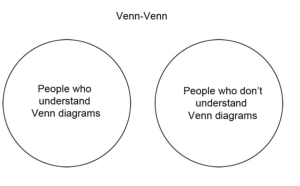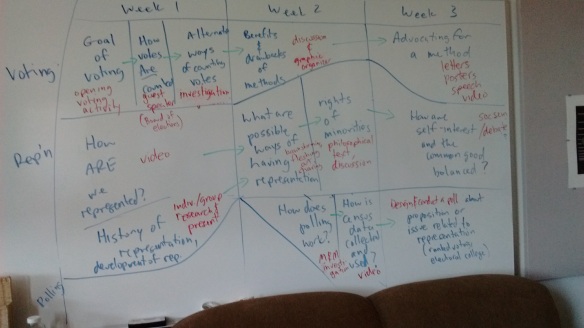Of all the things 2020 has thrown at us: murder hornets, fire tornados, a global pandemic…the one thing it doesn’t have is inertia.
Hear me out. There is no “we’ll just do things the way we’ve always done them” now (though not for lack of trying in some cases).
Everything is new, everything is broken, everything is different.
This has opened the door for the option to not only throw out the baby with the bathwater, but also the entire damn tub.
My amazing course team has decided to ask the question:
- What would we do if we didn’t have to cover anything?
- What would happen if we totally reimagined how our math class looked and felt?
These are some of the answers we’re (still) working on:
Syllabus as values statement (I wish I could remember who tweeted that phrase; it rang in my ears for days and I shared it with my team.) This is a paragraph from the document one of our team members came up with, which I *love* more than I ever imagined it was possible to love a syllabus!
“To promote equity and combat white supremacy culture, as well as in recognition of the diversity of challenges experienced differently by different people during this pandemic, we will anchor our grading methodologies with the question, “Does it matter where students started?” We want students to demonstrate growth, to challenge themselves, and personalize their learning. So, our grading methods will try to reflect those core learning principles.”
Rubric of core competencies (Speaking of grading…this is the rubric we’ll be using to assess students)
We haven’t quite figured out how we’re going to translate all that into a letter grade yet. Given that all of us on the team are proponents of abolishing letter grades, this will definitely be our biggest challenge. The only thing we do know is that all of a student’s graded work (and much of their ungraded work) will go into a semester-long Process Portfolio, made in Google Slides, which we’ll discuss regularly, both via 1:1 conferences and in written notes/reflections/feedback in the speaker notes section.
Intake form (HT to @sheathescholar for their idea to make a google form into a conversation…my intake form emerged directly from that.) Here are the first few questions–only the first question was required.
Music in the Zoom-room (HT to @carloliwitter, @AlainMotaSTEM, @LauraVHawkins, et. al. for their suggestions, pro-tips and playlists) After having been in several sessions that used music as a way to bring everyone into the meeting…and then hearing the awkward silence in one of my own breakout room sessions, I realized this was a must-do. I was given a master-class in finding and playing background music. If you also want tips, go read the thread on Twitter.
Sharing Pronouns (HT to @Alice_J_Grimm for a long-ago post about this that impacted me) I changed my profile name on Zoom so it now includes she/her so students can see my pronouns. I haven’t said anything about this (beyond what I said in my intake form), and I don’t plan on saying anything. I’ve already noticed one student rename himself during my class to include pronouns in his name. No student should feel obligated or pressured into sharing their pronouns with me, but I want to signal that I acknowledge that I don’t actually know what their pronouns are until they tell me. My profile name helps me say that.







